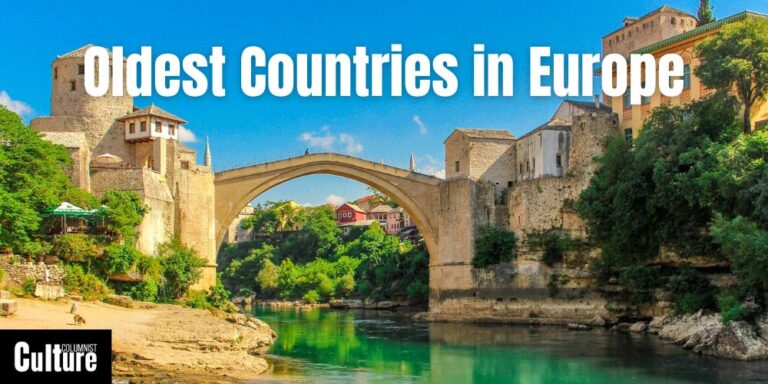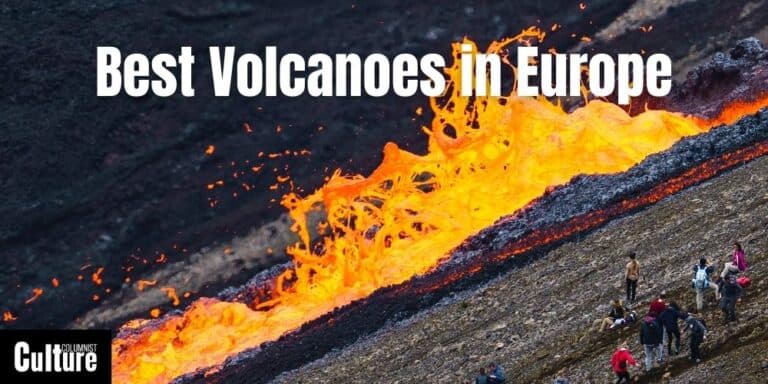Best Hot Springs To Visit In Europe: Wellness Retreat Inspo & Spa Escapes You’ll Love
Europe has a long history of valuing the therapeutic qualities of its natural hot springs, thermal baths, and spa towns. From the ancient Roman baths to the opulent spa towns of the 19th century, these destinations have offered rest and rejuvenation for generations.
Whether you are seeking some wellness retreat inspo, relaxation or a bit of historical charm, Europe’s hot springs and spa towns can offer great experiences. The challenge lies in choosing a destination that suits your expectations—be it a luxurious retreat, a family vacation, or a budget-friendly getaway.
Prices can range dramatically from the luxurious, such as Baden-Baden in Germany, to the more affordable options, like the thermal baths in Hungary. Also, each country often has its own traditional practices surrounding thermal baths, which can add a unique cultural element to your visit.
Whether you are a young couple seeking a romantic getaway, a solo traveler looking to unwind, or a family that enjoys nature and wellness activities, there’s a hot spring or spa town in Europe that caters to your rejuvenation goals. In the following list you’ll find a curated selection of Europe’s finest hot springs, thermal baths, and spa towns, each with its own unique features and benefits.
Blue Lagoon, Iceland
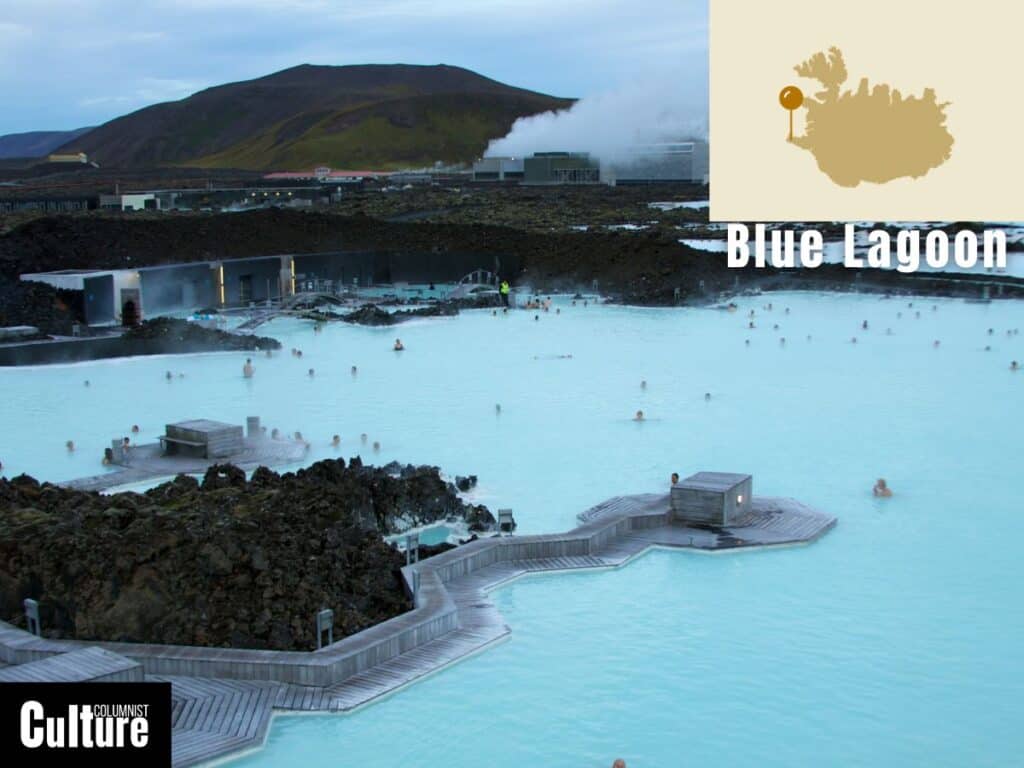
The Blue Lagoon is a renowned geothermal spa located in the Reykjanes Peninsula, near Grindavík, in southwestern Iceland. It was accidentally created in the late 1970s during operations at a nearby geothermal power plant. The unique properties of the water caught attention, and it has since become one of the most visited attractions in Iceland and Europe.
The lagoon’s milky blue water is rich in minerals like silica and sulfur. The water temperature stays relatively consistent, ranging between 37-40°C (98-104°F), providing a warm and soothing experience year-round.
While not naturally occurring, the lagoon’s geothermal water is renowned for its skin-care benefits. It is particularly famous for its efficacy in treating psoriasis, although these claims are based on anecdotal evidence rather than scientific proof.
Széchenyi Thermal Bath, Hungary
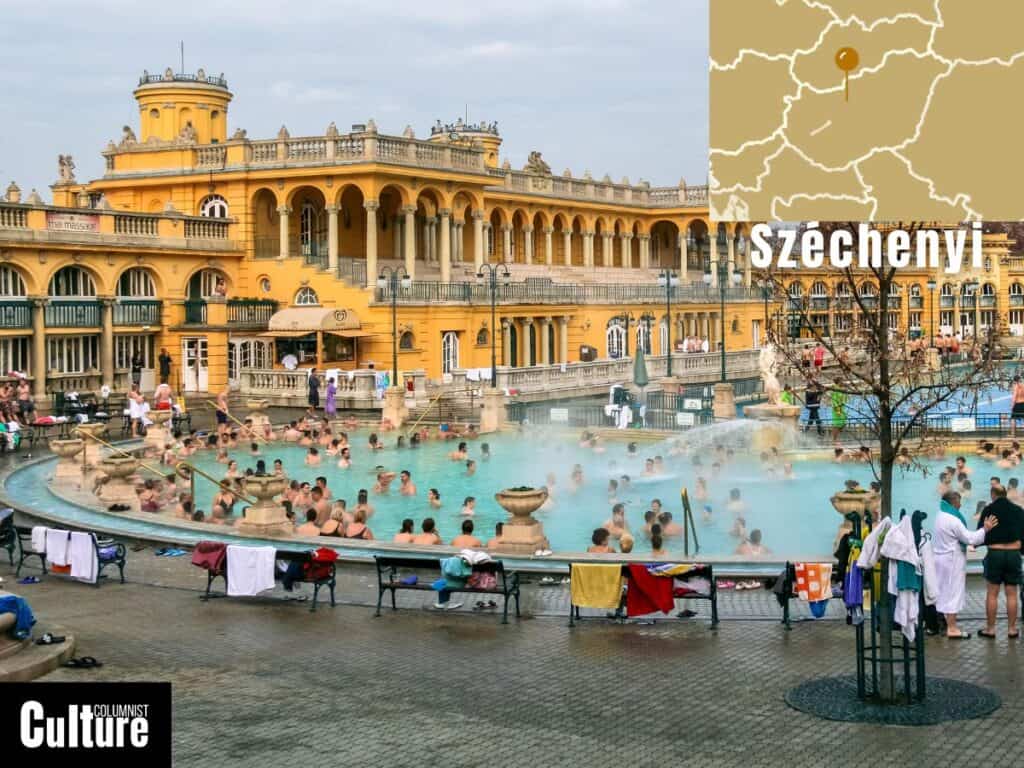
Széchenyi Thermal Bath is situated in Budapest, Hungary, specifically in the City Park. Established in 1913, it’s one of Europe’s largest public baths and a monument to Hungary’s long-standing spa culture, stemming from both Roman times and the Turkish occupation.
The complex is fed by two naturally occurring thermal springs, with temperatures ranging from 18 to 38°C (64-100°F). These waters are rich in minerals like calcium, magnesium, and bicarbonate. Although not medically verified, the baths are popular among locals for relieving joint and muscle pain.
The Széchenyi Bath features a total of 21 pools, including outdoor and indoor pools, and facilities like saunas and steam rooms. It’s particularly famous for its grand Neo-Baroque architecture and the unique experience of outdoor thermal bathing even in winter.
Thermae Bath Spa, England
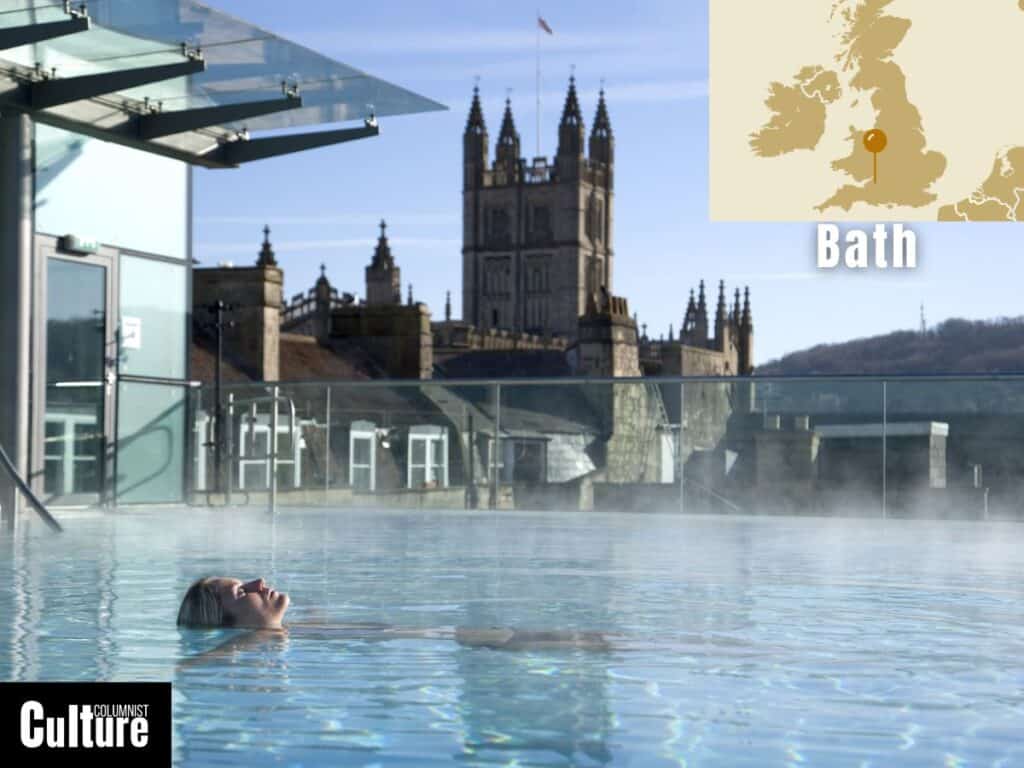
Located in the historic city of Bath, England, Thermae Bath Spa is a modern spa facility that taps into the region’s ancient thermal springs. The city’s thermal baths have been a center of wellness since Roman times, but with the original Roman bath houses being off limits for bathers, the Thermae Bath Spa is the next best way to experience the baths of Bath.
The waters at the spa have a consistent temperature of around 33.5°C (92.3°F) and are rich in more than 42 different minerals, including sulphate, calcium, and chloride. These mineral-rich waters are thought to have healing properties, although there are no medical claims to support these beliefs.
The spa has several thermal baths, steam rooms, and a rooftop pool with panoramic views of the city. The Georgian and Victorian architecture of the historic bath buildings complements the modern spa facilities, making it a unique place to experience the ancient and the modern simultaneously.
Aachen, Germany
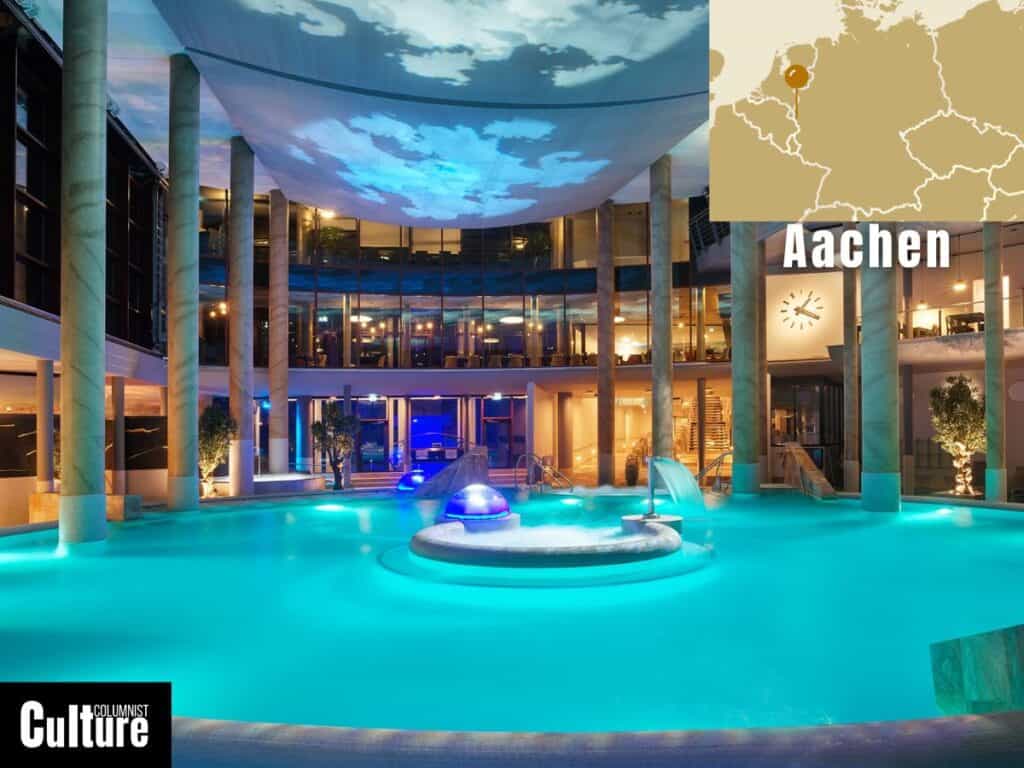
Aachen is a spa town located in North Rhine-Westphalia, Germany, near the borders with Belgium and the Netherlands. Renowned as the preferred spa destination of Charlemagne, the first Holy Roman Emperor, Aachen dates back to Roman times and its thermal springs have made it a wellness destination for centuries.
The hot springs of Aachen have a temperature range of 36°C to 53°C (97°F to 127°F) and are rich in minerals like sodium, calcium, and chloride. These thermal waters emerge from the earth naturally heated and are thought to have therapeutic qualities, although there are no scientific claims to substantiate these benefits.
Aachen offers a variety of bathing experiences, ranging from the traditional Carolus Thermen Bad Aachen with its classic Roman baths to more modern wellness centers. Visitors can enjoy a mix of indoor and outdoor pools, saunas, and even cold-water plunge pools.
Karlov Vary, Czech Republic
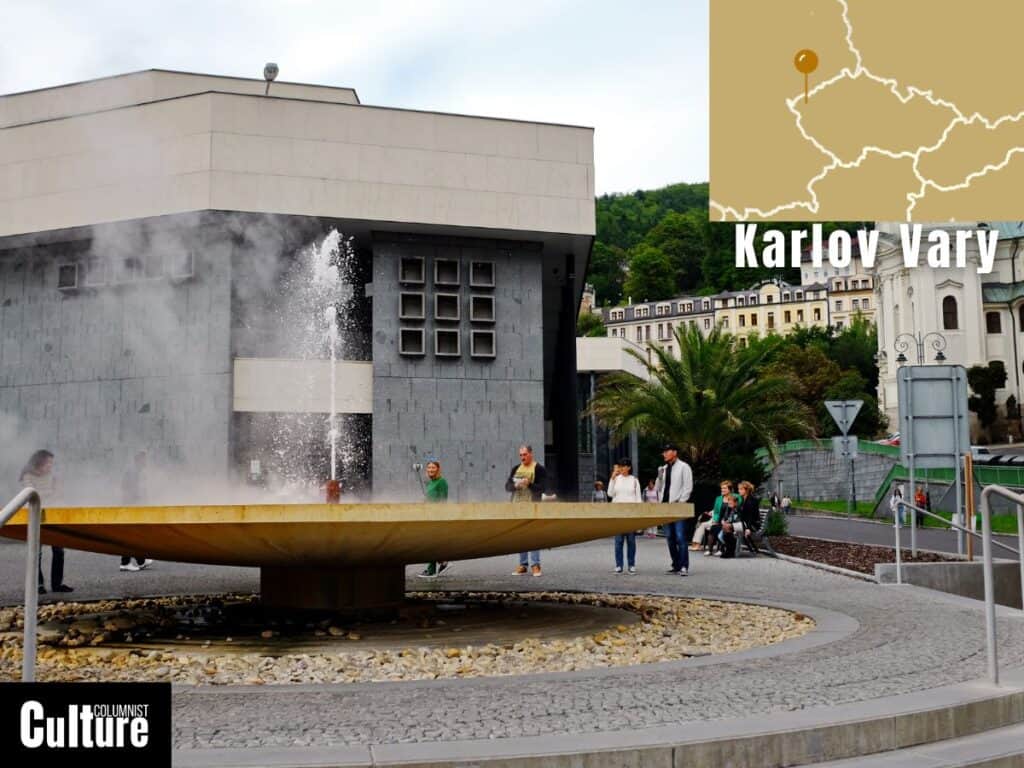
Karlovy Vary, also known as Carlsbad, is a historic spa town situated in western Bohemia, Czech Republic. The town’s thermal springs were discovered in the 14th century by Charles IV, Holy Roman Emperor, according to legend. Apart from the springs, Karlovy Vary has beautiful neoclassical architecture that creates a serene and luxurious ambiance.
The thermal springs of Karlovy Vary have a temperature range of 30°C to 72°C (86°F to 162°F) and contain a high amount of minerals, including sulfate, sodium, and bicarbonate. The waters are locally believed to aid in digestive ailments and metabolic disorders.
The town is home to seven grand colonnades, such as the Mill Colonnade and the Market Colonnade, which contain 15 springs with different temperatures, minerals and carbon dioxide levels. Visitors can have the unique experience of walking along the “drinking galleries” and sampling the thermal water for free. Don’t worry if you forget to bring a cup, as you can buy one as a souvenir throughout the city.
Baden-Baden, Germany
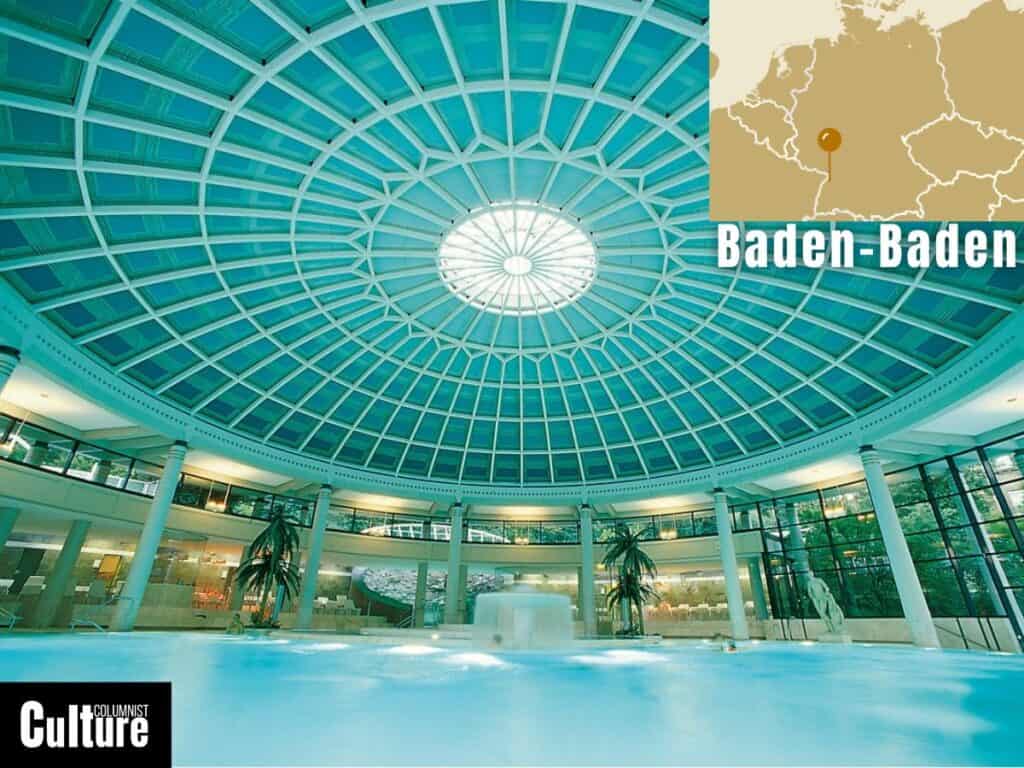
Baden-Baden is a spa town located in the state of Baden-Württemberg, southwestern Germany. The town’s thermal springs have been known for more than 2,000 years with classic Roman ruins and have been frequented by aristocrats and notable figures seeking relief, including Napoleon III and Queen Victoria.
The thermal springs of Baden-Baden emerge from artesian wells, flowing at temperatures ranging from 50°C to 68°C (122°F to 154°F). These waters are rich in minerals like sodium and chloride and are believed locally to have healing properties for skin and joint conditions.
Baden-Baden offers a number of bathing facilities, from the historic and opulent Friedrichsbad to the modern Caracalla Spa. Friedrichsbad combines Roman bathing culture with Irish hot-air baths, while Caracalla Spa offers a more contemporary experience with various pools, saunas, and wellness treatments.
San Pellegrino, Italy
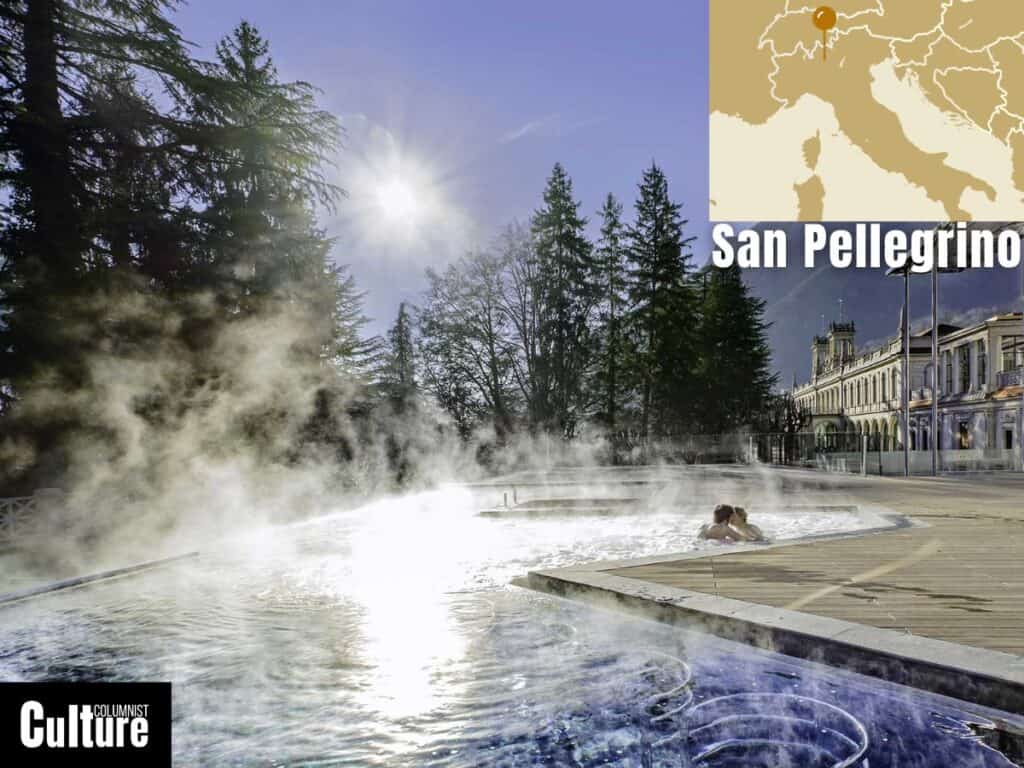
San Pellegrino Terme is a spa town situated in the Lombardy region of northern Italy. Known for its mineral water, the town gained popularity in the early 1900s and became a go-to destination for European elites. Not only is the town famous for its thermal baths but also for its globally famous bottled mineral water.
San Pellegrino’s thermal waters are rich in minerals like calcium, chloride, and magnesium. Emerging from underground springs at temperatures of around 22°C to 26°C, the water is considered to have therapeutic properties. Though not scientifically proven, traditional belief holds that these waters can help alleviate various gastrointestinal issues and skin conditions.
The town offers several spas, but the most iconic is the QC Terme San Pellegrino, which is housed in a restored early 20th-century casino building. Visitors can experience thermal pools, saunas, and even a ‘sound therapy’ room, all while appreciating the Art Nouveau architecture and stunning mountain views.
Pamekkale, Turkey
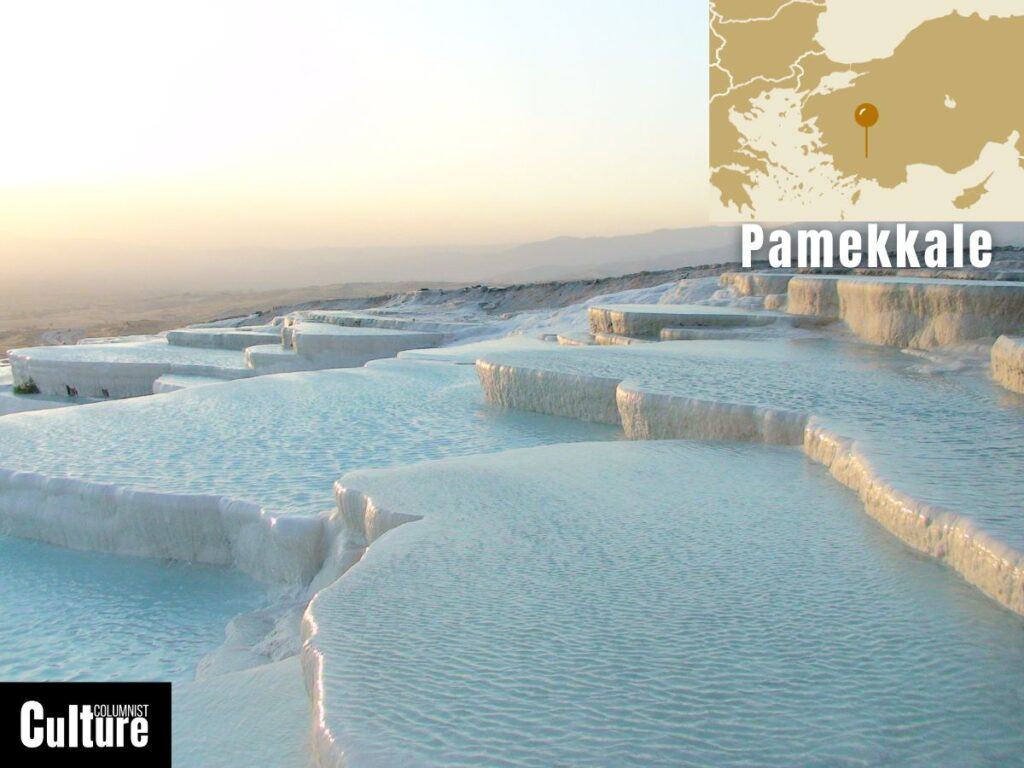
Pamukkale is a natural site located in Denizli Province in southwestern Turkey. Known as the “Cotton Castle” due to its white travertine terraces, it has been a center of thermal healing since ancient times and is currently a UNESCO World Heritage site.
Pamukkale is renowned for its striking white terraces of travertine, a form of limestone deposited by hot springs. The thermal waters here have a high content of calcium and bicarbonate and emerge from the ground at temperatures ranging from 35°C to 100°C. Traditionally, these waters are believed to offer relief for ailments such as skin diseases, circulatory issues, and digestive problems, although no scientific claims can confirm these benefits.
Despite being ancient, the facilities at Pamukkale are relatively modern. Visitors can take a dip in the Antique Pool, also known as Cleopatra’s Pool, filled with warm, mineral-rich waters and ancient columns submerged in the water. There are also several terraced pools where visitors can find a secluded spot to wade.
Vichy, France
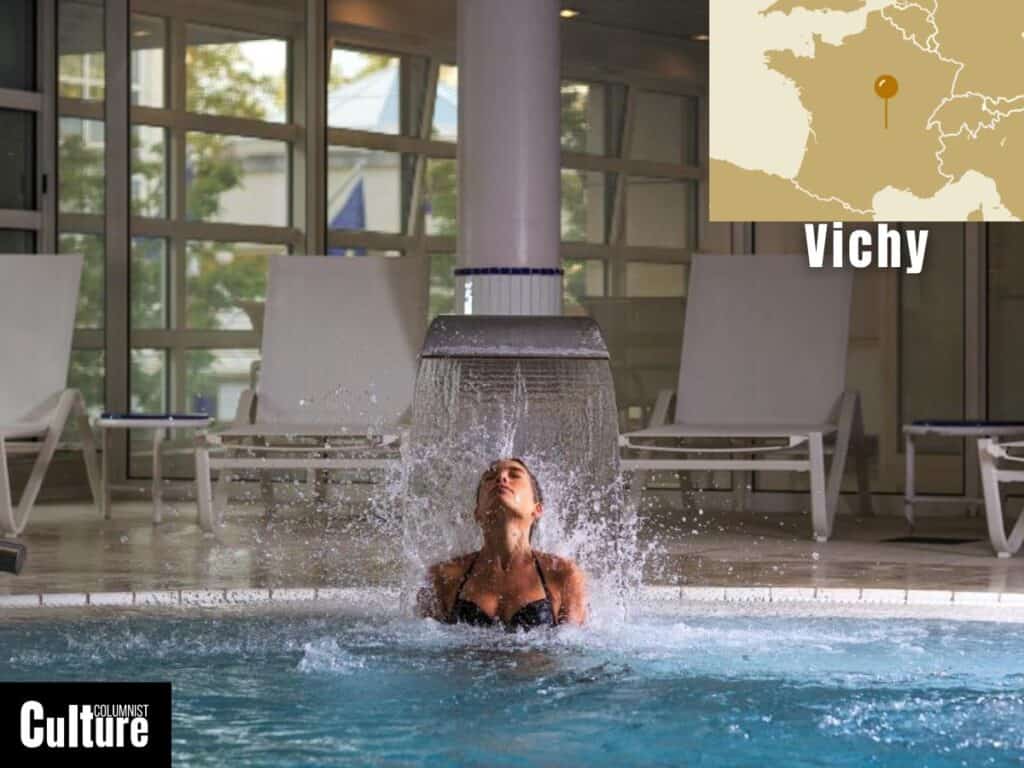
Vichy is a renowned spa town located in the Auvergne-Rhône-Alpes region of central France. Known as the “Queen of Spa Towns,” it has a rich history dating back to Roman times and was later popularized in the 1800s as a go-to destination for thermal treatments.
The thermal waters in Vichy are rich in minerals like bicarbonates, chlorides, and sodium. Emerging from underground springs at temperatures ranging from 24°C to 40°C, the waters are believed to have various therapeutic properties. Though not scientifically tested, tradition suggests that they help in treating digestive disorders, rheumatic conditions, and skin diseases.
The spas at Vichy offer a traditional and modern experience. The town boasts state-of-the-art thermal centers like Vichy Célestins Spa Hôtel, which offers a range of treatments based on the mineral-rich Vichy water, like balneotherapy, mud treatments, and a variety of other wellness services designed to sooth and revive.
Abano Terme, Italy
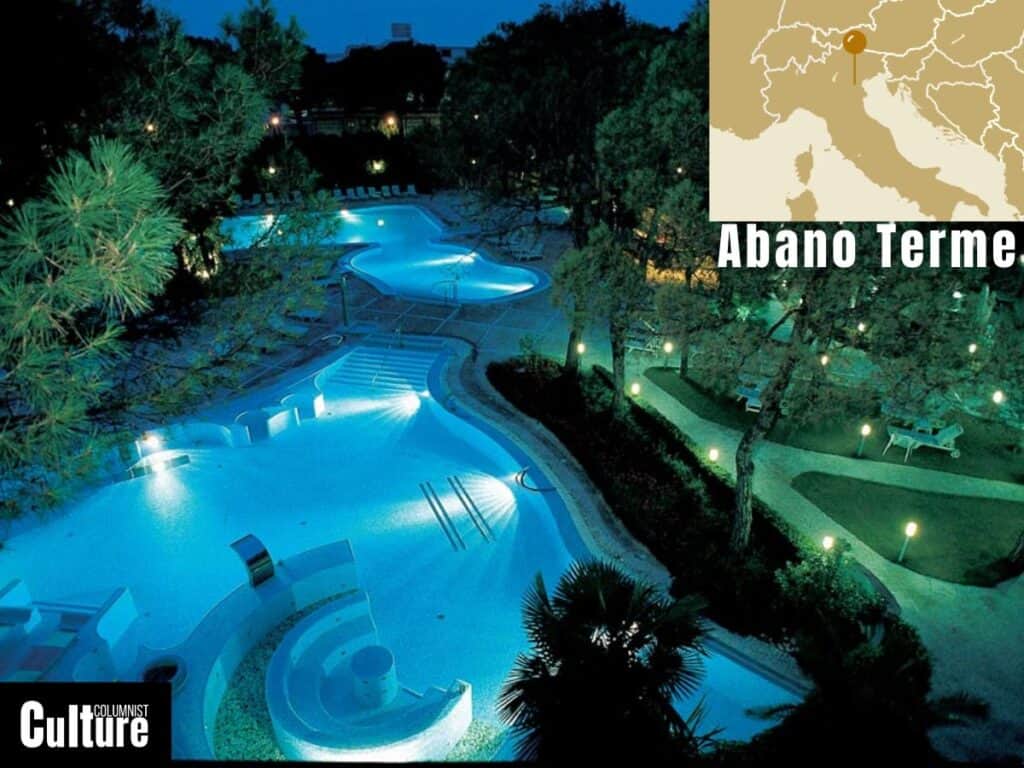
Abano Terme is a spa town located in the Veneto region of northeastern Italy, near the city of Padua. It is one of Europe’s oldest thermal bath destinations, tracing its origins back to ancient Roman times. Over the centuries, the town has gained recognition for its thermal waters.
The waters of Abano Terme are rich in bicarbonate, calcium, and fluoride. They emerge from springs at temperatures ranging from 78°C to 86°C and are cooled for therapeutic treatments. They are traditionally believed to have beneficial effects on a range of health issues and skin disorders, although these claims are not scientifically proven.
Abano Terme has a variety of modern spa centers equipped with the latest facilities for thermal treatments. These include mud therapies, balneotherapy, and a range of other wellness services. In addition to contemporary facilities, the town has several historical buildings and luxurious hotels that offer spa services, giving you a wide range of options if you’re seeking relaxation and calm.
Bormio, Italy
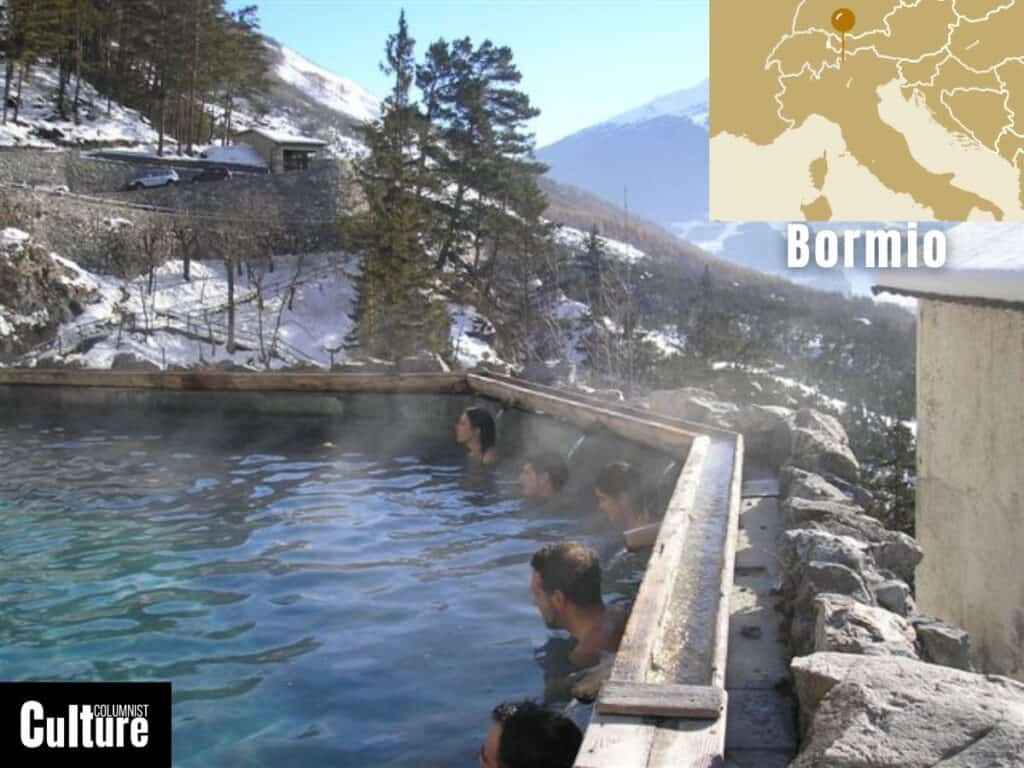
Bormio is a thermal bath town situated in the Lombardy region of northern Italy, in the heart of the Alps. Known since Roman times for its thermal waters, the town has been a well-regarded spa destination for centuries. Throughout its history, Bormio’s baths have attracted a wide range of visitors, from ancient Roman soldiers to the European elite.
The thermal waters of Bormio are rich in minerals and originate from springs in the Stelvio National Park. With temperatures ranging from 37°C to 40°C, the waters are reputed to have a number of therapeutic benefits. Traditional claims attribute healing properties to the waters, particularly for muscular ailments, respiratory issues, and skin conditions.
The town offers a mix of modern and traditional spas, including Bormio Terme, a contemporary wellness center, and Bagni Vecchi, a historic thermal bath that dates back to Roman times. Both establishments provide an extensive range of wellness services and treatments that use the area’s thermal waters, offering visitors an authentic experience in a stunning alpine setting.
Heviz, Hungary
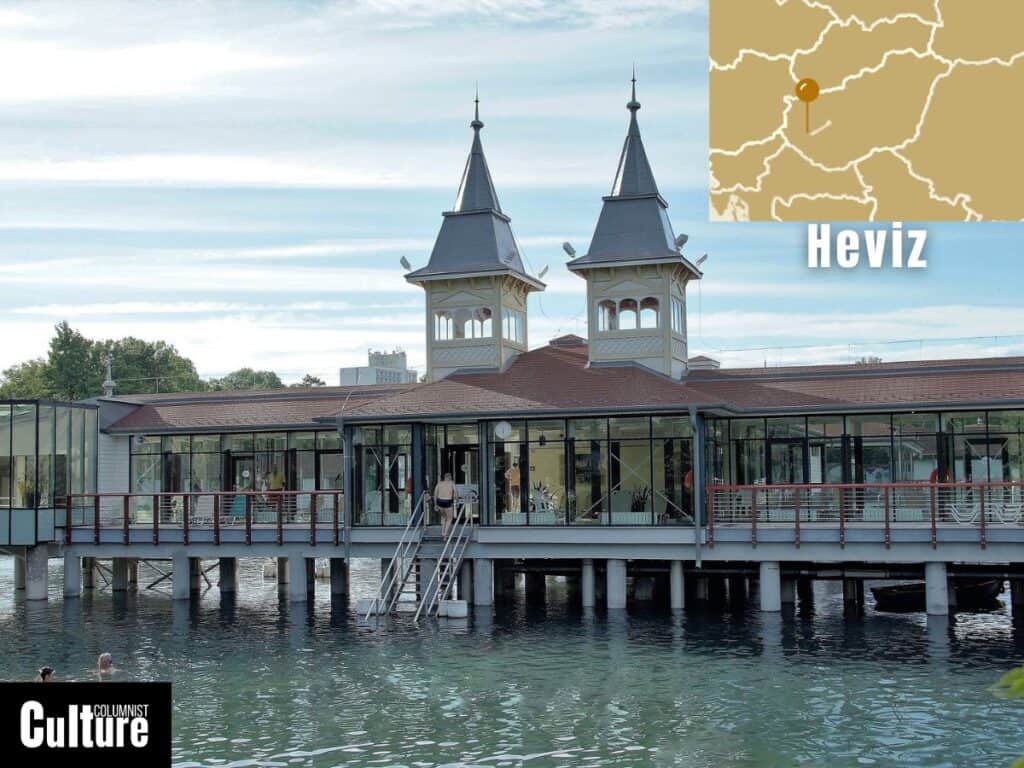
Hévíz is a spa town situated near Lake Balaton in western Hungary. It is home to Lake Hévíz, the world’s second-largest thermal lake, with the town itself having a long history of spa culture dating back to Roman times.
Lake Hévíz is a biologically active body of water with a unique mixture of sulfur, radium, and minerals. The water temperature ranges from 24°C to 37°C depending on the season, making it suitable for year-round bathing. Although not medically tested, the waters are believed to alleviate rheumatic diseases and certain skin conditions.
The spa town provides a range of modern facilities, including medical treatments, wellness services like mud treatments and weight baths, while there are several indoor bathing options for winter as well. Surrounded by woodland in all directions, Hévíz is perfect for those who want to enjoy bathing in a natural setting that feels close to nature.
La Roche Posay
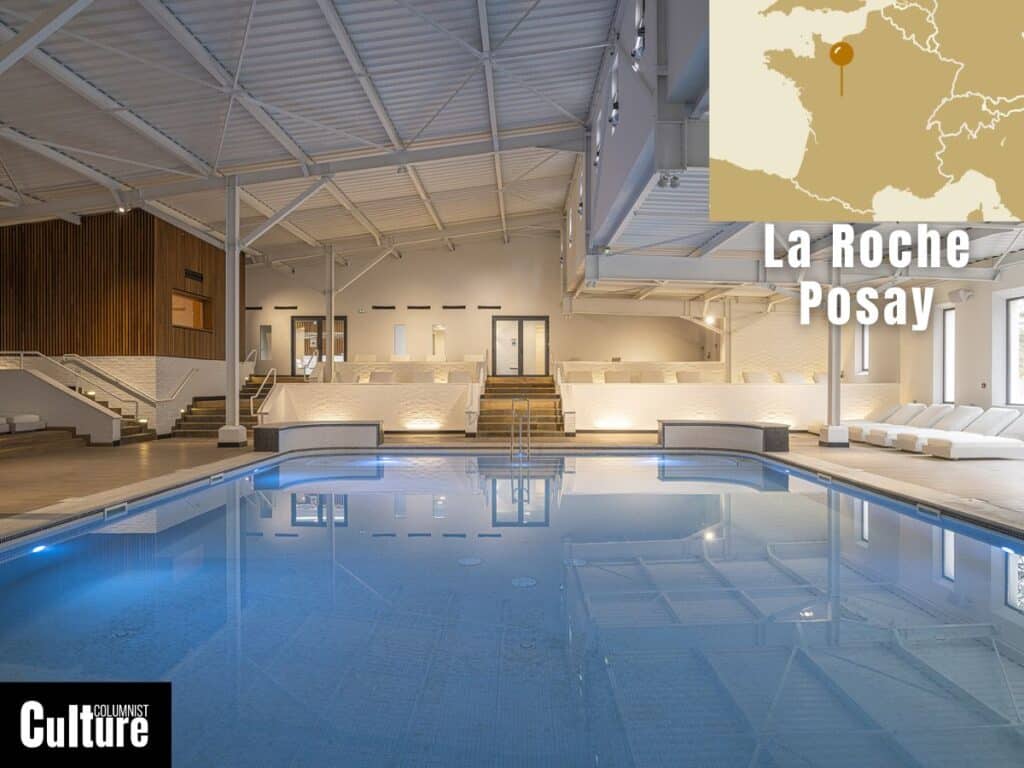
La Roche-Posay is a renowned spa town located in Vienne, in western France. The town’s history dates back to the Roman era and is particularly famous for its selenium-rich thermal spring water. Recognized for its dermatological properties, La Roche-Posay plays a significant role in the European wellness and skincare industry.
The thermal waters of La Roche-Posay are characterized by their high content of selenium, a trace element known for its antioxidant properties. With temperatures ranging from 13°C to 25°C, the waters are especially beneficial for skin health. While no scientific claims are made, the water is traditionally believed to aid in the treatment of various skin conditions like eczema and psoriasis.
The town offers state-of-the-art spa facilities that specialize in dermatological treatments. Alongside traditional thermal therapies, La Roche-Posay also provides a range of modern skincare treatments. The town spas are surrounded by beautifully landscaped gardens that help to add even more serenity to your trip.
Caldes de Boí, Spain
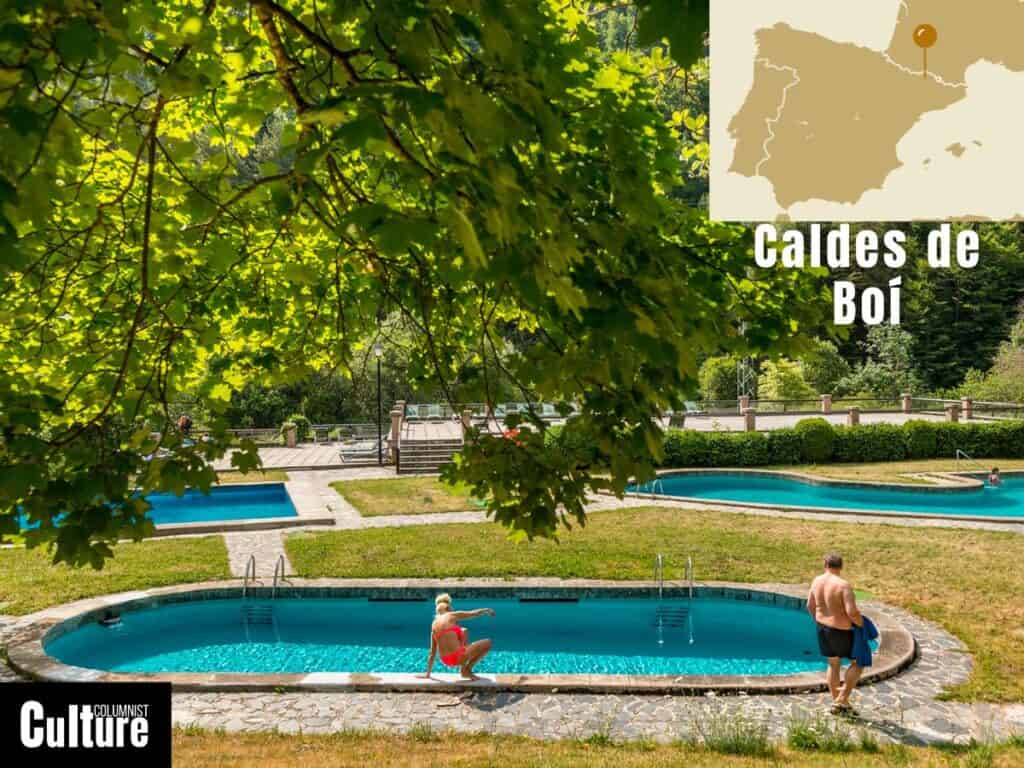
Caldes de Boí is a well-known spa town situated in the Pyrenees mountains of Catalonia, Spain. This thermal complex boasts a history that dates back to Roman times. It has been a fixture in European thermal baths, attracting both local and international visitors for its therapeutic waters.
Caldes de Boí features various springs, each with its own unique mineral composition and temperature, ranging from 4°C to 56°C. The waters are high in sulfates, bicarbonates, and chlorides, and they are thought to have therapeutic properties beneficial for metabolic and locomotor system conditions. While not medically tested, locals believe the waters can help alleviate various health issues.
The spa complex at Caldes de Boí offers multiple facilities, including both indoor and outdoor thermal pools. Modern and traditional treatments, such as mud baths and inhalation therapies, are available. With a backdrop of stunning mountain scenery, the location allows for a complete wellness experience, blending natural beauty with therapeutic care.
Furnas, Azores
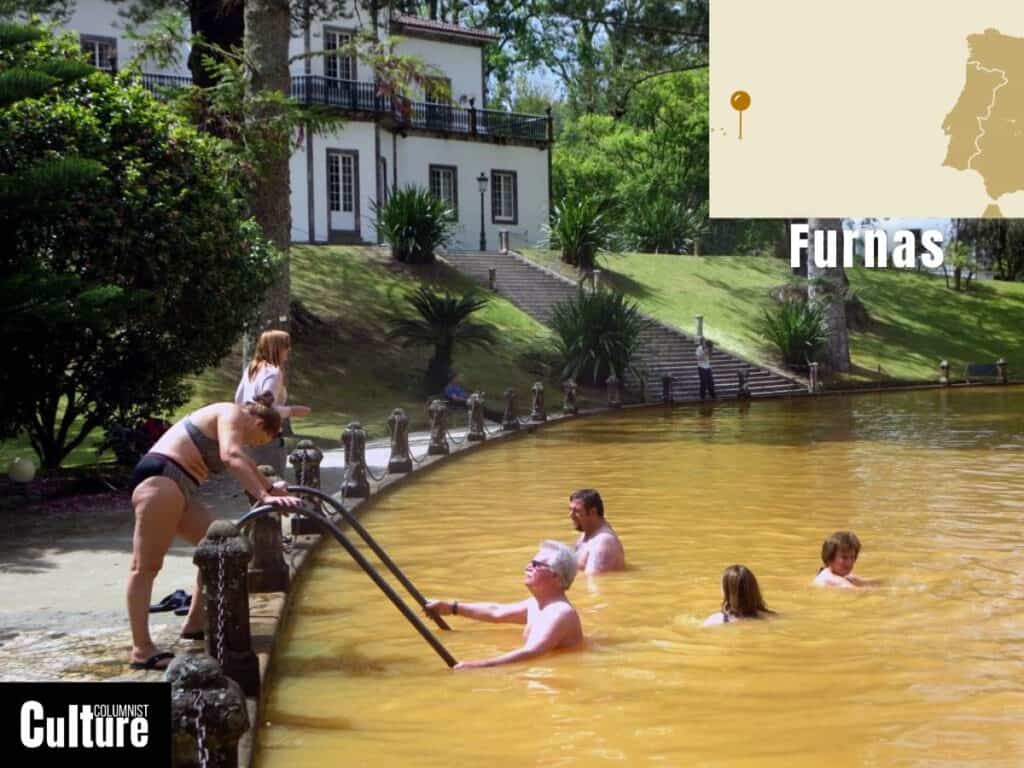
Furnas is a thermal bath town located in the Azores, an autonomous region of Portugal. Situated on São Miguel Island, Furnas has a long history of attracting visitors for its geothermal springs, dating back to the 19th century.
The hot springs in Furnas are rich in minerals like iron and sulfur. The water temperatures vary but can reach up to 40°C (104°F). These thermal waters are often anecdotally associated with relief from rheumatic pains and skin conditions. The natural setting of Furnas, surrounded by lush landscapes and volcanic activity, adds to the therapeutic experience.
The best spa experiences in Furnas have to be the natural thermal pools. Terra Nostra Park, in particular, is famous for its large thermal swimming pool tinted an orange-brown due to its iron content. Visitors can enjoy a tranquil setting where the thermal baths are surrounded by botanical gardens and the striking landscapes of the Azores.
Terme Valdieri, Italy
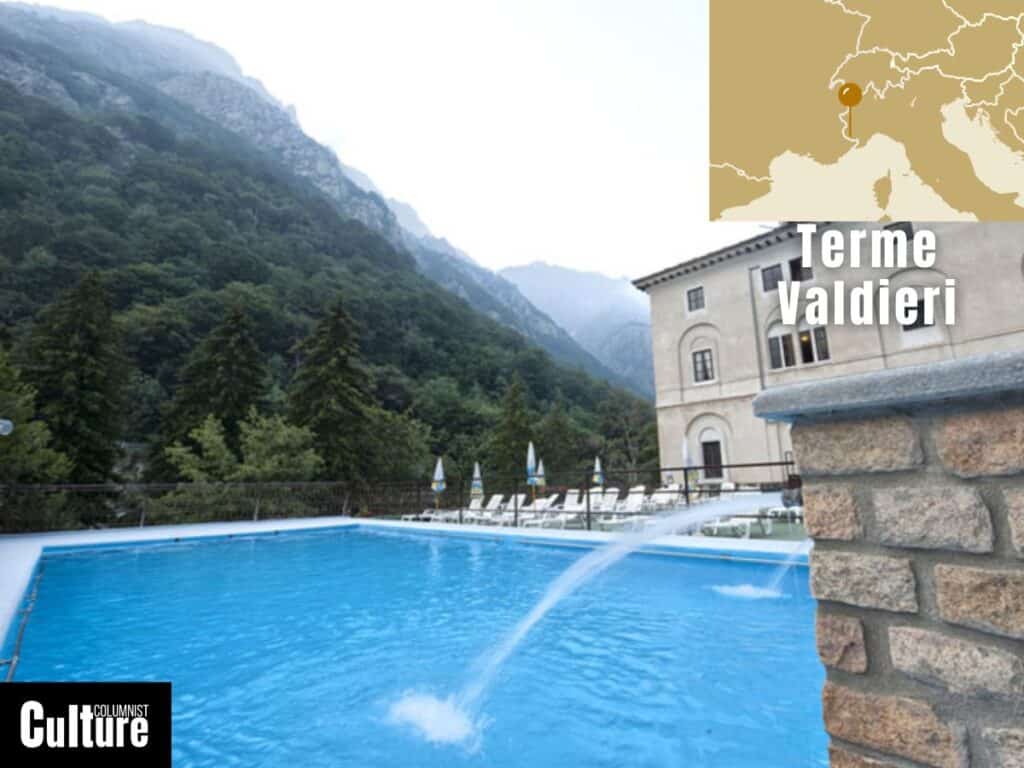
Terme Valdieri is a thermal bath located in the Piedmont region of Italy. Nestled within the Maritime Alps, this spa town has a history that traces back to Roman times. Known for its alpine setting, it has become a popular destination for wellness seekers in Europe.
The hot springs in Terme Valdieri are rich in sulfate, calcium, and magnesium. The temperature of the water varies but can go up to 35°C (95°F). Although not tested, the waters are believed to offer relief from skin and respiratory ailments, although they have not yet been tested. The high-altitude, alpine setting means you can breathe in the clean, unpolluted air as part of your therapeutic experience.
The Terme Valdieri offers a range of bathing facilities, from natural thermal pools to spa treatments. The area provides a tranquil environment, set against the backdrop of the Maritime Alps, allowing visitors to soak in the thermal waters while enjoying the natural beauty of the region, making it a great option for hikers and outdoor enthusiasts.
Spa, Belgium
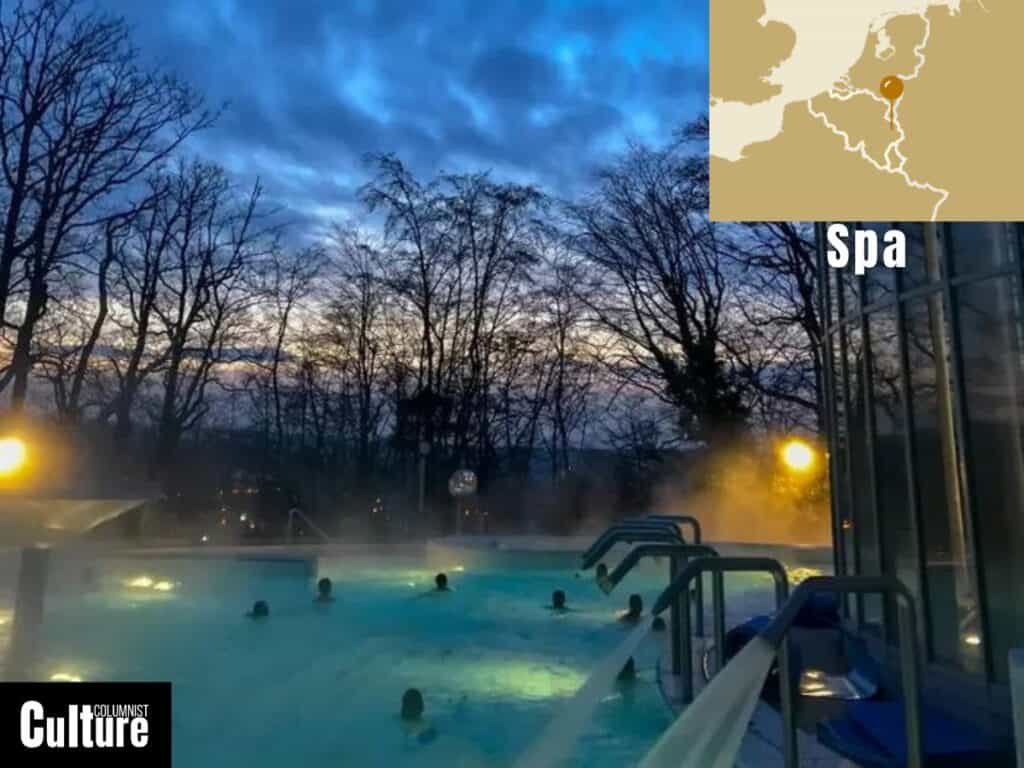
Spa is a renowned thermal bath town located in the Wallonia region of Belgium. The town’s name itself has become synonymous with any place with healing waters. Dating back to Roman times, the thermal springs in Spa have been visited by European aristocrats such as Czar Peter the Great, cementing its status as a wellness destination in Europe.
The thermal waters of Spa are rich in iron and carbon dioxide, emanating from the Ardennes mountains. The temperatures of these springs are naturally warm, though not hot, typically ranging from 32°C to 34°C (89.6°F to 93.2°F). The water’s therapeutic benefits have never been tested but it is traditionally thought to have healing properties for the skin and muscles.
Modern facilities at Spa include the Thermes de Spa, a large, state-of-the-art wellness center that features a range of pools, saunas, and treatment rooms. Visitors can also experience the original springs at the Pouhon Pierre le Grand, a historical building in the town center where you can drink the famed spa water.
Loutra Pozar, Greece
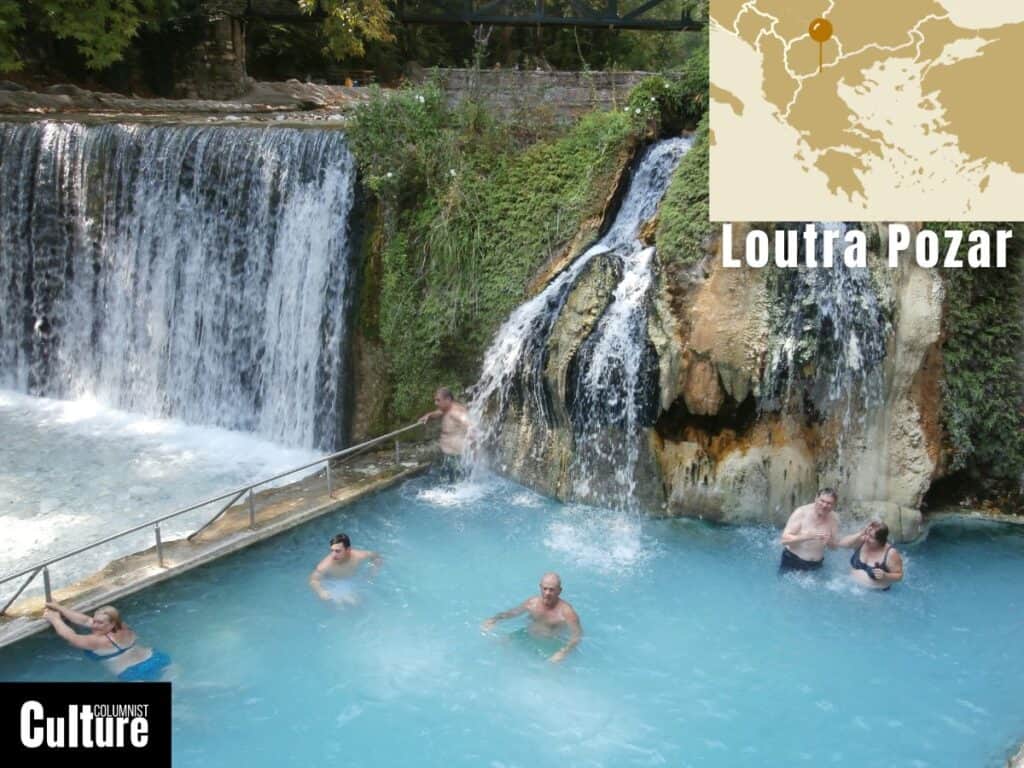
Loutra Pozar is a thermal bath town located in the Pella region of northern Greece. The name “Pozar” translates to “fire,” a nod to the warm, natural springs that have made this town a popular thermal destination.
The thermal springs of Loutra Pozar are situated at the foot of Mount Kaimaktsalan and have a temperature that ranges from 30°C to 37°C (86°F to 98.6°F). The waters are rich in minerals like potassium, sodium, and calcium and are traditionally believed to offer relief from rheumatic and skin diseases.
The town offers various bathing facilities, from natural pools by the riverside to a more organized thermal spa center complete with modern features. The spa center includes indoor and outdoor pools, private baths, and hydrotherapy treatments. The surrounding forest offers hiking trails and waterfalls, making Loutra Pozar not just a thermal retreat but also a nature getaway.
Bad Gastein, Austria
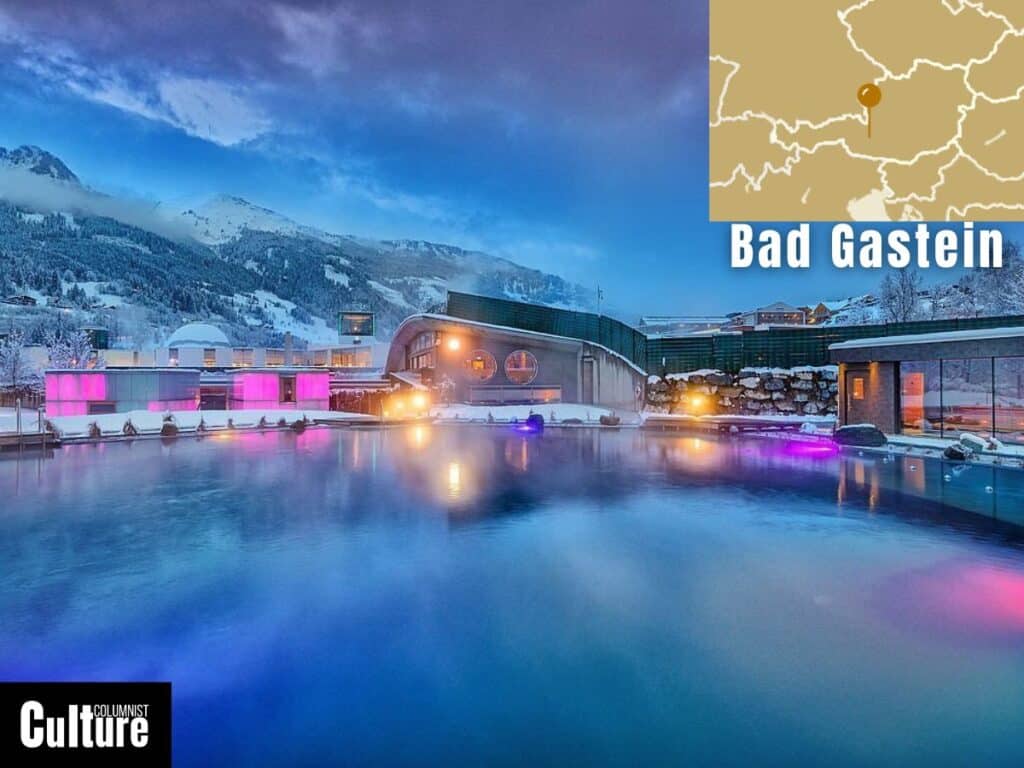
Bad Gastein is a spa town situated in the state of Salzburg, Austria, within the Hohe Tauern mountain range of the Austrian Alps. Known for its Belle Époque buildings and stunning alpine settings, Bad Gastein has been a go-to thermal bath destination since the Middle Ages and was often visited by Austrian emperors.
The thermal waters in Bad Gastein are rich in radon and have temperatures ranging from 44.6°F to 113°F (7°C to 45°C). The presence of radon, a mildly radioactive gas, is said to have therapeutic effects, although not medically proven. Traditional beliefs say that the waters can alleviate muscle aches and pains and improve respiratory health.
Bad Gastein offers a variety of facilities for thermal bathing, from historical bathhouses to contemporary spa centers. The Felsentherme spa is one of the most popular, featuring a range of pools and saunas set against the backdrop of the stunning Alps. Outdoor activities such as skiing in winter and hiking in summer can complement the thermal bathing experience, making it a year-round destination.
Terme de saturnia, Italy
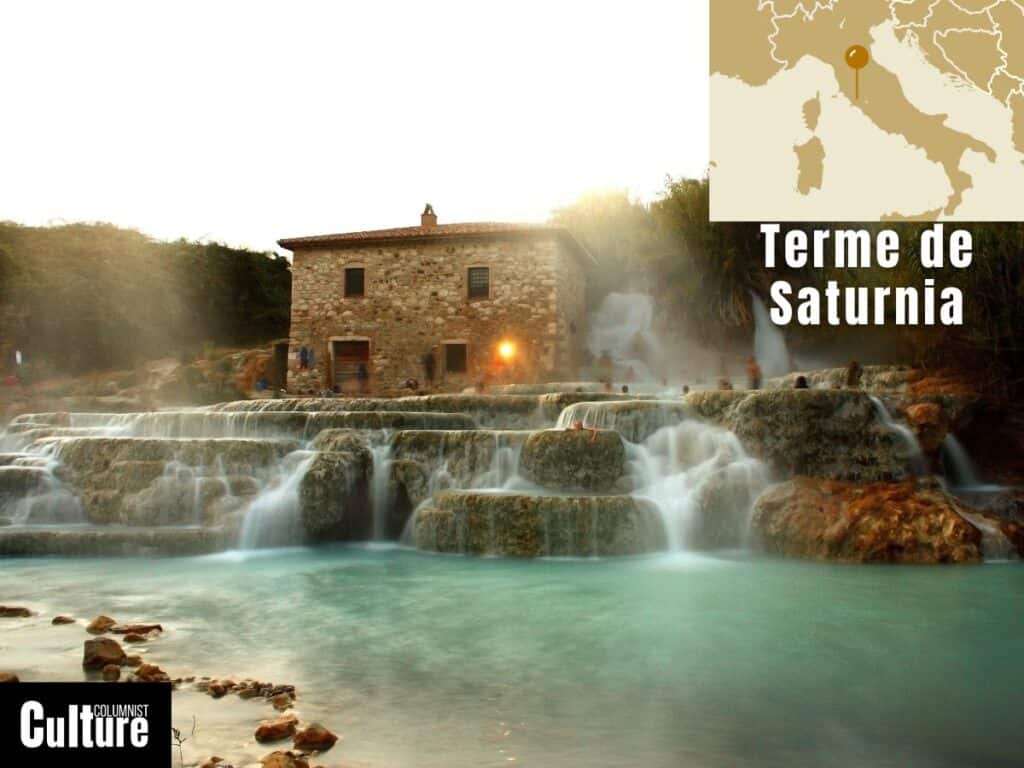
Terme di Saturnia is a thermal bath located in Tuscany, Italy. Legend has it that Saturn, the god of wealth, grew weary of human conflict and hurled a thunderbolt to the earth, causing the spring to emerge from the ground, ushering in a golden era of peace and agriculture.
The springs at Terme di Saturnia flow at a constant temperature of 37.5°C (99.5°F) and are rich in sulphur, carbon, sulphates, and bicarbonate-alkaline earth. The mineral-rich waters are thought to help with skin conditions and promote relaxation but have not been scientifically tested.
The Terme di Saturnia offers a range of bathing experiences, from natural rock pools to a more luxurious spa setting. The resort features thermal pools, Roman baths, and even a dedicated wellness center that offers various therapies, including massage, cryotherapy and thermal treatments. If you love mythology or history, this is a spa that is not to be missed.
What is the spa capital of Europe?
The spa capital of Europe is often considered to be Budapest, Hungary, a city renowned for having the most hot springs of any capital in the world. It’s known as the “City of Spas” for good reason, boasting the largest number of thermal bath facilities and bath houses on the continent.
Budapest sits on a geological fault line from which over a hundred natural hot springs flow, providing the city with one of the largest supplies of thermal water. This abundance of geothermal activity has led to a rich history of bathing that dates back to Roman times, making Budapest one of the must-see cities of Europe.
Does Europe have natural hot springs?
Yes, Europe has numerous natural hot springs, which are largely due to geological processes at work beneath the surface, including tectonic movements and volcanic activity, which heat underground water and bring it to the surface.
The island of Ischia in Italy, for example, is known for its natural thermal baths, which are heated by the volcanic activity from the nearby Mount Vesuvius, one of Europe’s most prominent volcanoes. Iceland, also known as the “land of ice and fire,” is famous for its blue lagoon with water that is heated by a geothermal power station fed by volcanic energy.


